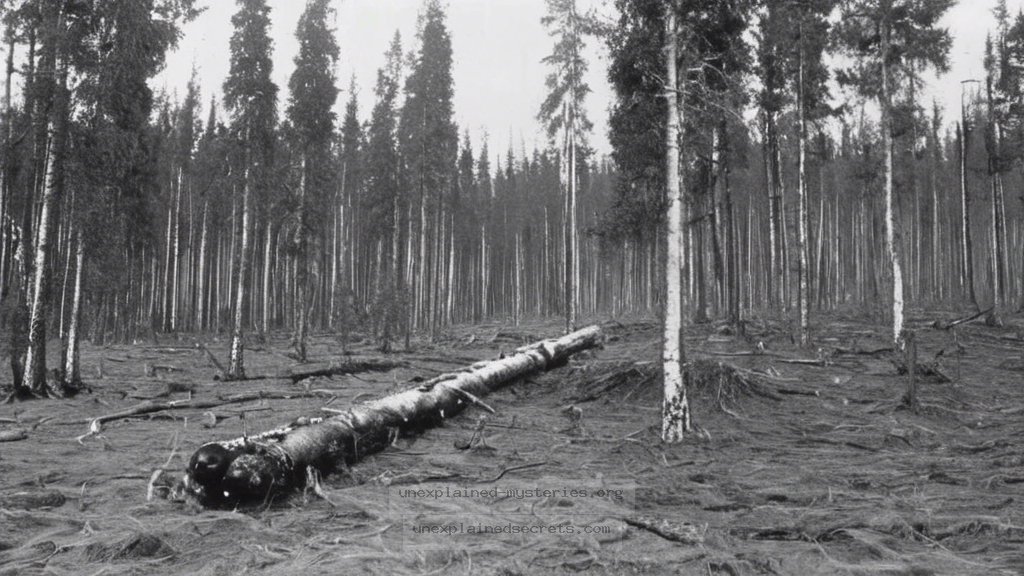What Causes the Mysterious Tunguska Event of 1908 and Why Is It Still Unexplained?
What Causes the Mysterious Tunguska Event of 1908 and Why Is It Still Unexplained?
The Tunguska Event remains one of the most perplexing scientific mysteries of the 20th century. On June 30, 1908, a massive explosion occurred in a remote area near the Tunguska River in Siberia, Russia, leveling an estimated 80 million trees over an area of 2,000 square kilometers. Despite extensive research, the exact cause of this cataclysmic event is still a matter of debate among scientists. Understanding Tunguska is not just about uncovering a historical anomaly; it also sheds light on the vulnerabilities of our planet to cosmic events and raises questions about how such phenomena can be studied in the future. This post delves deep into the various hypotheses surrounding the Tunguska Event, its implications, and the ongoing quest for answers.
Historical Context of the Tunguska Event
The Tunguska Event occurred in a time of scientific curiosity and exploration. At the turn of the century, the world was on the brink of significant technological advancements. However, the remote location of the explosion and the political climate of the Russian Empire at the time meant that it took years for the event to gain proper attention. It wasn’t until 1927 that a Soviet scientific expedition, led by Leonid Kulik, ventured into the area to investigate the phenomenon. Kulik found evidence of destruction but no impact crater, which was puzzling. This led to various theories about what could have caused such a massive explosion without a visible impact.
Core Theories Surrounding the Tunguska Event
Several theories have been proposed to explain the Tunguska Event, each with its own merits and challenges. The most widely accepted theory is that of a comet or asteroid airburst. This theory posits that a small celestial body exploded in the atmosphere, releasing energy equivalent to 10-15 megatons of TNT, approximately 1,000 times more powerful than the atomic bomb dropped on Hiroshima. Other theories suggest that it could have been a meteorite impact, a volcanic eruption, or even a nuclear explosion, although the latter has been largely discredited due to historical timelines.
Practical Implications and Evidence of the Event
The implications of the Tunguska Event extend beyond mere curiosity. It serves as a reminder of the threats posed by near-Earth objects (NEOs). Understanding how to detect and potentially mitigate such events is crucial for planetary defense. The Tunguska Event has prompted advancements in tracking NEOs, contributing to the establishment of various space agencies’ observational programs. Moreover, the event has sparked interest in developing technologies to deflect potentially hazardous asteroids before they can cause damage.
Alternative Perspectives: Beyond the Mainstream Theories
While the airburst theory remains dominant, alternative perspectives have emerged over the years. Some researchers propose that the event may have been the result of highly volatile natural gas igniting, while others speculate about underground chemical explosions or even theoretical phenomena like antimatter collisions. These alternative theories often lack the empirical support found in the airburst hypothesis but reflect the curiosity and ingenuity of the scientific community.
Common Misconceptions and Clarifications
Several misconceptions surround the Tunguska Event. One common belief is that it was an atomic explosion, possibly related to secret Soviet tests. However, historical evidence and scientific analysis have debunked this theory, as the event predates nuclear testing by several decades. Another misconception is that the area was densely populated, which would have led to massive casualties. In reality, the remote location and sparse population meant that the event caused relatively few injuries, although it left a significant ecological impact.
Best Practices for Investigation and Research
Investigating events like Tunguska requires a multidisciplinary approach. Researchers must combine geology, astronomy, and environmental science to create a comprehensive understanding of the phenomenon. Field studies, satellite imagery, and historical documentation are essential for gathering evidence. Additionally, public engagement and citizen science projects can help raise awareness and involve communities in research efforts.
Future Developments and Ongoing Research
The Tunguska Event continues to inspire research into cosmic threats. Scientists are now employing advanced technology, such as radar and satellite tracking, to identify and monitor NEOs more effectively. The establishment of the Planetary Defense Coordination Office by NASA is a significant step toward proactive measures against potential asteroid impacts. Moreover, ongoing studies of the Tunguska site itself, including soil samples and tree growth patterns, may yield new insights into the event and its implications for Earth’s history.
Real-World Examples of Similar Events
While the Tunguska Event is the most famous, other incidents have occurred that share similarities. The Chelyabinsk meteor in 2013, which exploded over Russia, is a modern example of a cosmic object causing significant damage without an impact crater. This event demonstrated the need for improved detection systems for incoming threats. In addition, historical records of airburst events, such as the 1492 explosion over the skies of the Spanish city of Tomares, provide further context and underscore the prevalence of such phenomena throughout history.
| Event | Date | Location | Description |
|---|---|---|---|
| Tunguska Event | June 30, 1908 | Siberia, Russia | Massive airburst explosion, no impact crater. |
| Chelyabinsk Meteor | February 15, 2013 | Chelyabinsk, Russia | Small asteroid exploded in the atmosphere, causing injuries and damage. |
| Tomares Airburst | April 1492 | Tomares, Spain | Reported explosion that flattened trees and caused panic. |
Conclusion: The Quest for Understanding Continues
The Tunguska Event remains one of science’s most enduring mysteries. Despite numerous theories and decades of research, the exact cause of the explosion is still hotly debated. This investigation is crucial not only for understanding past events but also for preparing for future cosmic threats. As technology advances and our understanding of the universe deepens, we may finally uncover the true nature of the Tunguska Event and what it means for our planet’s safety. The quest for answers is far from over, and each piece of new evidence brings us closer to understanding the celestial forces that shape our world.
Other Articles
Recent Posts
- What Happened to Flight MH370? The Conspiracy Theories That Still Haunt Us
- What Secrets Lurk Within the Walls of the Infamous Trans-Allegheny Lunatic Asylum?
- What Evidence Supports the Existence of Bigfoot in the Pacific Northwest?
- What Happened to the Indus Valley Civilization? Unraveling the Mysteries of Ancient Urban Life
- Can Telepathy Be Scientifically Proven Through Laboratory Evidence?







